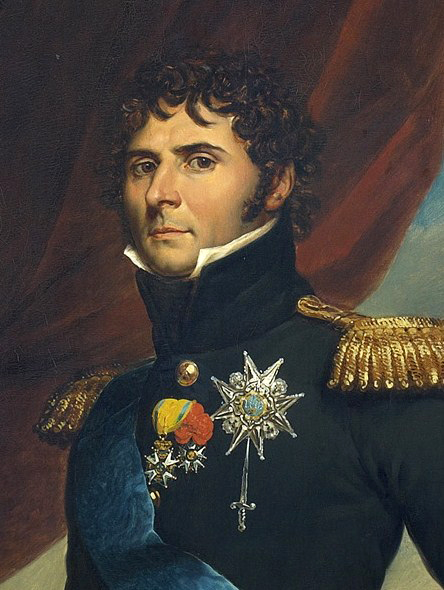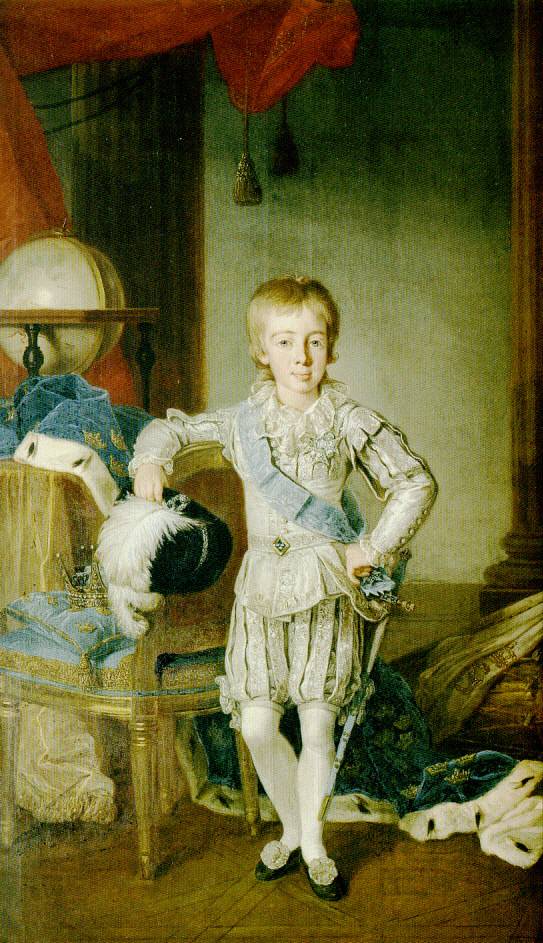|
Peace Of Kiel
The Treaty of Kiel ( da, Kieltraktaten) or Peace of Kiel (Swedish and no, Kielfreden or ') was concluded between the United Kingdom of Great Britain and Ireland and the Kingdom of Sweden on one side and the Kingdoms of Denmark and Norway on the other side on 14 January 1814 in Kiel.Schäfer (2002), p. 137 It ended the hostilities between the parties in the ongoing Napoleonic Wars, where the United Kingdom and Sweden were part of the anti-French camp (the Sixth Coalition) while Denmark–Norway was allied to France. Frederick VI of Denmark joined the anti-French alliance, ceded Heligoland to George III of the United Kingdom, and further ceded the Kingdom of Norway to Charles XIII of Sweden in return for Swedish Pomerania. Specifically excluded from the exchange were the Norwegian dependencies of Greenland, Iceland and the Faroe Islands, which remained in the union with Denmark. (Norway would unsuccessfully contest the Danish claim to all of Greenland in the Eastern Greenland Case ... [...More Info...] [...Related Items...] OR: [Wikipedia] [Google] [Baidu] |
Peace Treaty
A peace treaty is an agreement between two or more hostile parties, usually countries or governments, which formally ends a state of war between the parties. It is different from an armistice, which is an agreement to stop hostilities; a surrender, in which an army agrees to give up arms; or a ceasefire or truce, in which the parties may agree to temporarily or permanently stop fighting. The art of negotiating a peace treaty in the modern era has been referred to by legal scholar Christine Bell as the , with a peace treaty potentially contributing to the legal framework governing the post conflict period, or . Elements of treaties The content of a treaty usually depends on the nature of the conflict being concluded. In the case of large conflicts between numerous parties, international treaty covering all issues or separate treaties signed between each party. There are many possible issues that may be included in a peace treaty such as the following: * Formal designation of ... [...More Info...] [...Related Items...] OR: [Wikipedia] [Google] [Baidu] |
Greenland
Greenland ( kl, Kalaallit Nunaat, ; da, Grønland, ) is an island country in North America that is part of the Kingdom of Denmark. It is located between the Arctic and Atlantic oceans, east of the Canadian Arctic Archipelago. Greenland is the world's largest island. It is one of three constituent countries that form the Kingdom of Denmark, along with Denmark and the Faroe Islands; the citizens of these countries are all citizens of Denmark and the European Union. Greenland's capital is Nuuk. Though a part of the continent of North America, Greenland has been politically and culturally associated with Europe (specifically Norway and Denmark, the colonial powers) for more than a millennium, beginning in 986.The Fate of Greenland's Vikings , by Dale Mackenzie Brown, ''Archaeological Institute of America'', ... [...More Info...] [...Related Items...] OR: [Wikipedia] [Google] [Baidu] |
Gustav IV Adolf Of Sweden
Gustav IV Adolf or Gustav IV Adolph (1 November 1778 – 7 February 1837) was King of Sweden from 1792 until he was deposed in a coup in 1809. He was also the last Swedish monarch to be the ruler of Finland. The occupation of Finland in 1808–09 by Russian forces was the immediate cause of Gustav's violent overthrow by officers of his own army. Following his abdication on 29 March 1809, an Instrument of Government was hastily written, which severely circumscribed the powers of the monarchy. The "Instrument" was adopted in 1809 on 6 June, the National Day of Sweden now as well as in his time. It remained in force until replaced in 1974. The crown, now with strictly limited powers, passed to Gustav's uncle Charles XIII, who had no legitimate children; this want of heirs set into motion the quest for a successor, who was found the following year in the person of Jean-Baptiste Jules Bernadotte, the first monarch of the present royal family. ch 37 pp 203-19 Early life Gustav Adolf w ... [...More Info...] [...Related Items...] OR: [Wikipedia] [Google] [Baidu] |
Parliament
In modern politics, and history, a parliament is a legislative body of government. Generally, a modern parliament has three functions: Representation (politics), representing the Election#Suffrage, electorate, making laws, and overseeing the government via hearings and inquiries. The term is similar to the idea of a senate, synod or congress and is commonly used in countries that are current or former monarchies. Some contexts restrict the use of the word ''parliament'' to parliamentary systems, although it is also used to describe the legislature in some presidential systems (e.g., the Parliament of Ghana), even where it is not in the Legal name, official name. Historically, parliaments included various kinds of deliberative, consultative, and judicial assemblies, an example being the French medieval and early modern parlements. Etymology The English term is derived from Anglo-Norman language, Anglo-Norman and dates to the 14th century, coming from the 11th century Old ... [...More Info...] [...Related Items...] OR: [Wikipedia] [Google] [Baidu] |
Convention Of Moss
The Convention of Moss (''Mossekonvensjonen'') was a ceasefire agreement signed on 14 August 1814 between the King of Sweden and the Norwegian government. It followed the Swedish-Norwegian War due to Norway's claim to sovereignty. It also became the ''de facto'' peace agreement and formed the basis for the personal union between Sweden and Norway that was established when the Norwegian Storting (Parliament) elected Charles XIII of Sweden as king of Norway on 4 November 1814. The Union lasted until Norway declared its dissolution in 1905. Background In 1814, Denmark–Norway was on the losing side in the Napoleonic wars. Under the Treaty of Kiel, negotiated on 14 January 1814, Norway was ceded to the king of Sweden, of the new House of Bernadotte. In an attempt to take control of their destiny, the Norwegians convened a constitutional assembly at Eidsvoll and, on 17 May 1814, signed the Constitution of Norway. The viceroy and heir to the thrones of Denmark and Norway, Prince ... [...More Info...] [...Related Items...] OR: [Wikipedia] [Google] [Baidu] |
Union Between Sweden And Norway
Sweden and Norway or Sweden–Norway ( sv, Svensk-norska unionen; no, Den svensk-norske union(en)), officially the United Kingdoms of Sweden and Norway, and known as the United Kingdoms, was a personal union of the separate kingdoms of Sweden and Norway under a common monarch and common foreign policy that lasted from 1814 until its peaceful dissolution in 1905. The two states kept separate constitutions, laws, legislatures, administrations, state churches, armed forces, and currencies; the kings mostly resided in Stockholm, where foreign diplomatic representations were located. The Norwegian government was presided over by viceroys: Swedes until 1829, Norwegians until 1856. That office was later vacant and then abolished in 1873. Foreign policy was conducted through the Swedish foreign ministry until the dissolution of the union in 1905. Norway had been in a closer union with Denmark, but Denmark-Norway's alliance with Napoleonic France caused the United Kingdom and ... [...More Info...] [...Related Items...] OR: [Wikipedia] [Google] [Baidu] |
Congress Of Vienna
The Congress of Vienna (, ) of 1814–1815 was a series of international diplomatic meetings to discuss and agree upon a possible new layout of the European political and constitutional order after the downfall of the French Emperor Napoleon Bonaparte. Participants were representatives of all European powers and other stakeholders, chaired by Austrian statesman Klemens von Metternich, and held in Vienna from September 1814 to June 1815. The objective of the Congress was to provide a long-term peace plan for Europe by settling critical issues arising from the French Revolutionary Wars and the Napoleonic Wars without the use of (military) violence. The goal was not simply to restore old boundaries, but to resize the main powers so they could balance each other and remain at peace, being at the same time shepherds for the smaller powers. More fundamentally, strongly generalising, conservative thinking leaders like Von Metternich also sought to restrain or eliminate republicanism, ... [...More Info...] [...Related Items...] OR: [Wikipedia] [Google] [Baidu] |
Prussia
Prussia, , Old Prussian: ''Prūsa'' or ''Prūsija'' was a German state on the southeast coast of the Baltic Sea. It formed the German Empire under Prussian rule when it united the German states in 1871. It was ''de facto'' dissolved by an emergency decree transferring powers of the Prussian government to German Chancellor Franz von Papen in 1932 and ''de jure'' by an Allied decree in 1947. For centuries, the House of Hohenzollern ruled Prussia, expanding its size with the Prussian Army. Prussia, with its capital at Königsberg and then, when it became the Kingdom of Prussia in 1701, Berlin, decisively shaped the history of Germany. In 1871, Prussian Minister-President Otto von Bismarck united most German principalities into the German Empire under his leadership, although this was considered to be a "Lesser Germany" because Austria and Switzerland were not included. In November 1918, the monarchies were abolished and the nobility lost its political power during the Ger ... [...More Info...] [...Related Items...] OR: [Wikipedia] [Google] [Baidu] |
Christian VIII Of Denmark
Christian VIII (18 September 1786 – 20 January 1848) was King of Denmark from 1839 to 1848 and, as Christian Frederick, King of Norway in 1814. Christian Frederick was the eldest son of Hereditary Prince Frederick, a younger son of King Frederick V of Denmark and Norway. As his cousin, King Frederick VI had no sons, Christian Frederick was heir presumptive to the throne from 1808. Early years Birth and family Prince Christian Frederick of Denmark and Norway was born on 18 September 1786 at Christiansborg Palace, the principal residence of the Danish Monarchy on the island of Slotsholmen in central Copenhagen. He was officially the eldest son of Hereditary Prince Frederick of Denmark and Norway and Duchess Sophia Frederica of Mecklenburg-Schwerin. His father was a younger son of the deceased King Frederick V of Denmark-Norway and his second wife, Duchess Juliana Maria of Brunswick-Wolfenbüttel, and his mother was a daughter of Duke Louis of Mecklenburg-Schwerin. In the family, ... [...More Info...] [...Related Items...] OR: [Wikipedia] [Google] [Baidu] |
Constitution Of Norway
nb, Kongeriket Norges Grunnlov nn, Kongeriket Noregs Grunnlov , jurisdiction =Kingdom of Norway , date_created =10 April - 16 May 1814 , date_ratified =16 May 1814 , system =Constitutional monarchy , branches = Judicial, Executive, and Legislative , chambers =Unicameral , executive =Prime Minister , courts = Supreme court, Court of impeachment, and subordinate courts , federalism =No , electoral_college =No , date_legislature =7 October 1814 , citation = , location_of_document = Storting , writer =Norwegian Constituent Assembly , head_of_state=Monarchy of Norway , supersedes=King's Law (Lex Regia) , wikisource = Constitution of Norway The Constitution of Norway (complete name: The Constitution of the Kingdom of Norway; Danish: ; Norwegian Bokmål: ; Norwegian Nynorsk: ) was adopted on 16 May and signed on 17 May 1814 by the ... [...More Info...] [...Related Items...] OR: [Wikipedia] [Google] [Baidu] |







